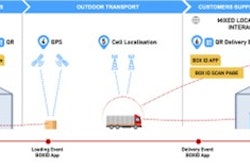
In today's fast-paced business landscape, where customer expectations are higher than ever, effective supply chain management has become a critical differentiator for companies seeking to build customer trust and achieve operational excellence. Traditionally, the supply chain is often viewed as a back-office operation, but in today’s digital economy, the supply chain is now central to the overall customer experience, and it can make or break a company's success. When done right, they build trust, reinforce brand promises, and create meaningful differentiation. When they fall short, the consequences ripple across customer loyalty, operational efficiency, and bottom-line performance.
A Gartner study found that 83% of companies are evolving their supply chains to be more customer-centric, prioritizing service quality, unique offerings, and providing multiple fulfillment options. This shift signals a fundamental shift: supply chain management is no longer just about logistics and inventory control, it's integral to the end-to-end customer journey. Supporting this shift, McKinsey research shows that companies investing in the digitization of their supply chains are reaping significant benefits, with research indicating an average annual EBIT growth of 3.2%.
Yet, despite this progress, many organizations continue to suffer from poor supply chain management, resulting in delayed deliveries, stockouts, and damaged customer relationships. One example of successful transformation comes from a Latin American distributor that digitized its supply chain to support thousands of small, family-run stores. By replacing manual restocking with a mobile ordering and delivery system, the company was able to enable reliable, scheduled deliveries while preserving critical payment flexibility. The result: greater inventory availability and stronger customer loyalty across the network.
Transparency and distribution: Building blocks of trust
Two critical aspects of supply chain management that remain top of mind for businesses aiming to build customer trust are stock transparency and effective distribution.
Real-time stock visibility is especially important in B2B industries, where customers rely on accurate data to make business-critical decisions. Take, for example, a manufacturer of automotive components like bearings. By providing transparent inventory data to major vehicle manufacturers, these suppliers enable more accurate production planning, reduce waste, and build confidence through dependability.
Distribution precision is equally vital. A tech product distributor, for instance, might grapple with uneven stock allocation across channels, resulting in unmet demand and frustrated customers. With the implementation of a stock allocation module, products can be distributed more fairly and transparently, meeting the needs of both retailers and wholesalers. This level of control not only enhances fulfillment but strengthens long-term customer relationships by delivering consistency and fairness.
The cost of getting it wrong
Businesses that prioritize their supply chains gain the ability to better forecast demand, reduce inefficiencies, and foster stronger customer relationships.
On the flip side, the consequences of neglecting the supply chain can be devastating. An example is when a retailer launches over 100 stores in rapid succession, and then faces significant issues with inventory management and overwhelmed distribution centers.
The strategic supply chain advantage
In today’s digital commerce landscape, where speed, accuracy, and transparency define success, the power of supply chain management goes well beyond logistics. Businesses must integrate real-time inventory visibility, diverse fulfillment options, and digitized workflows to meet modern customer expectations. Those that do will not only operate more efficiently but also deliver a superior customer experience that drives loyalty and long-term growth.
Today, a digitally enabled supply chain is more than infrastructure, it’s a cornerstone of customer trust and a critical lever for sustained competitive advantage.



















